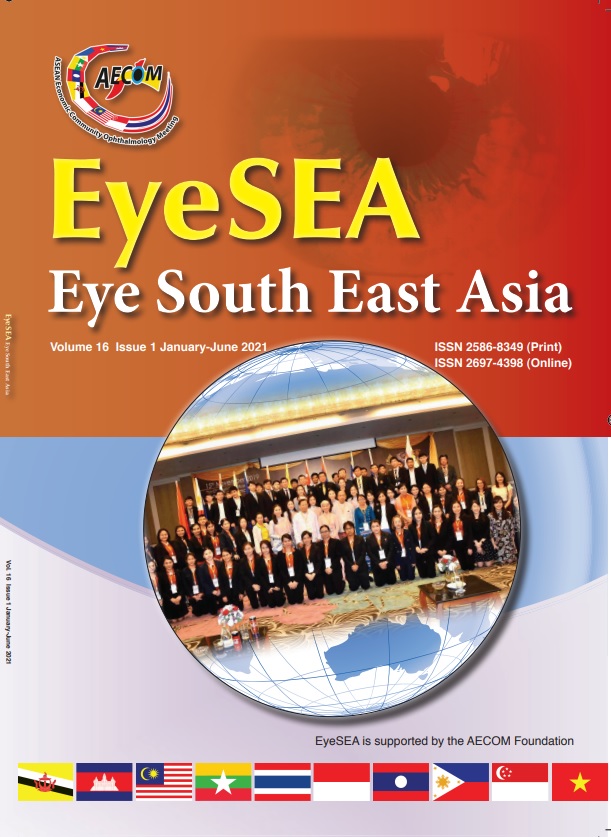Survey of prevention of postoperative endophthalmitis after cataract surgery in Thailand
Main Article Content
Abstract
Purpose: To survey the current practice of the prophylaxis methods to prevent postoperative endophthalmitis after cataract surgery in Thailand.
Design: Research questionnaire
Methods: A questionnaire survey via e-mail was conducted with ophthalmologists in Thailand. The duration to answer the questionnaire was from January to April 2014. Data was collected on and descriptively analyzed on prophylaxis methods in preoperative, operative, postoperative, and type of antibiotics used.
Main outcome measures: The primary outcome measure was the current practice after routine methods prophylaxis.
Results: From this survey 72 out of 100 ophthalmologists were included. It shows that most of them prescribed preoperative topical antibiotic eye drop 1 day before surgery and the antibiotic is Moxifloxacin (n=27; 37.5%). All doctors in this survey used antiseptics prior to surgery; povidone-iodine was most commonly used (n=70; 97.2%). However, they rarely used antibiotics mixed with saline to irrigate the ocular surface. Few surgeons either applied intracameral antibiotic or subconjunctival antibiotic injection. Only 11.1% (n=8) of surgeons injected intracameral cefuroxime. In postoperative care Quinolone (Moxifloxacin) eye drops were most commonly used (n=24; 33.3%) and applied antibiotics continuously one month after surgery. On the other hand, oral antibiotics were not commonly used. Various topical anti-inflammatory drugs were used along with topical antibiotics. However, they were usually prescribed in separate bottles. The anti-inflammation drugs were prednisolone (n=46; 63.9%), dexamethasone (n=17; 23.6%), and fluorometholone (n=1; 1.4%). From the aforementioned previous prophylaxis methods, 57 doctors found that the rate of patients diagnosed with postoperative endophthalmitis from cataract surgery was less than 0.1%.
Conclusions: The correct method to prevent postoperative endophthalmitis after cataract surgery remains unclear. Based on this survey, povidone-iodine applied to the ocular surface prior to surgery and fluoroquinolone eye drops used post operation seems to be effective in preventing endophthalmitis after cataract surgery.


